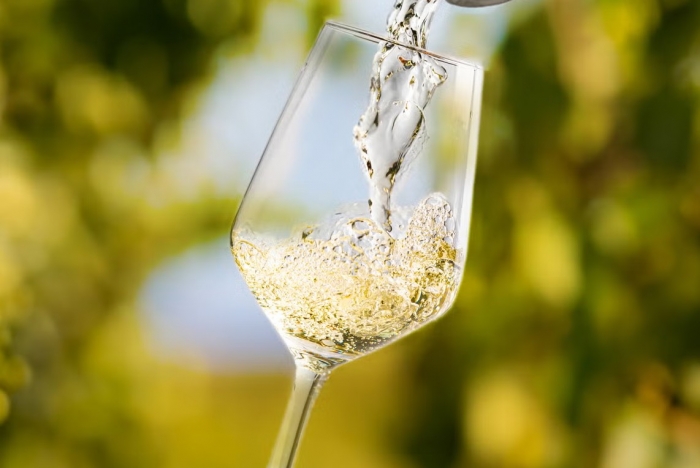Mâconnais region emerges as a leader in affordable quality white Burgundy wines
New premier cru designations, investment, and diverse producers drive transformation and recognition for this historic French wine region
2025-06-24

In the heart of Burgundy, the Mâconnais region is drawing attention for its dynamic transformation and the quality of its wines at accessible prices. Once known mainly for red wine production until the 1950s, the Mâconnais now stands as Burgundy’s largest vineyard area, covering 5,600 hectares across 89 communes. The region is a major source of white wines, especially chardonnay, and includes a range of appellations from regional to local, such as Mâcon, Mâcon-Villages, and 27 village-specific Mâcon designations. Five village appellations—Saint-Véran, Viré-Clessé, Pouilly-Loché, Pouilly-Vinzelles, and Pouilly-Fuissé—are recognized for their prestige.
Unlike Chablis or Côte-d’Or, the Mâconnais does not have Grand Cru vineyards but has seen the introduction of Premier Cru status in recent years. Pouilly-Fuissé received its first Premier Crus in 2020, with Pouilly-Loché and Pouilly-Vinzelles following in 2025. These new classifications come with strict requirements: mechanical harvesting and chemical herbicides are banned, yields are capped at 58 hectoliters per hectare, and a minimum alcohol level of 12% is required. Wines must also be aged until at least July 1 of the year following harvest.
The region’s diversity is reflected in its wines. Areas like Verzé, Cruzille, and Bray are gaining recognition for their high-quality output. Notably, Belgian winemaker Jean-Marie Guffens has been producing acclaimed chardonnays between Pierreclos and Vergisson for over four decades. Alongside many small family estates, cooperative wineries play a significant role in the local economy. The Cave de Lugny alone manages 1,300 hectares of vines. Other important cooperatives include the Cave des Vignerons d’Igé and Vignerons des Terres Secrètes. The region also attracts négociants from Beaune and beyond; houses like Verget and Auvigue are noted for their renewed focus on quality.
The past two decades have seen an influx of investment from both within Burgundy and outside. Esteemed producers from Meursault and Puligny have acquired vineyards here. In 2024, businessman Jean d’Arthuys purchased Château de Vinzelles with plans for wine tourism development.
One of the Mâconnais’ main advantages is price. As demand for red Burgundy softens and prices for top Côte de Nuits and Côte de Beaune wines reach new highs, Mâconnais whites remain affordable by comparison. Few Pouilly-Fuissé wines exceed €50—a stark contrast to their northern counterparts.
Recent vintages have presented both challenges and opportunities. While northern Burgundy suffered low yields in 2024 due to poor weather, much of the Mâconnais had a normal harvest with fresh, balanced wines at moderate alcohol levels. However, spring frost damaged some late-ripening areas, and severe hailstorms in September destroyed nearly all red grapes in Cruzille. The 2023 vintage was abundant but sometimes lacked acidity; careful growers in cooler sites produced excellent results despite hail losses in places like Bray. The hot, dry 2022 vintage yielded concentrated whites with strong aging potential; most top cuvées from this year are now available.
A comprehensive tasting led by Jean-Emmanuel Simond in March and April 2025 at the BIVB in Beaune covered 400 wines from across the region. Additional tastings took place during estate visits and at La Revue du Vin de France’s offices.
The selection spans both white and red wines from recent vintages (2022–2024), highlighting standout bottles across appellations such as Mâcon-Bray, Mâcon-Burgy, Mâcon-Bussières, Mâcon-Chaintré, Mâcon-Chardonnay, Mâcon-Cruzille, Mâcon-Fuissé, Mâcon-Igé, Mâcon-La Roche Vineuse, Mâcon-Loché, Mâcon-Lugny, Mâcon-Milly-Lamartine, Mâcon-Péronne, Mâcon-Pierreclos, Mâcon-Solutré-Pouilly, Mâcon-Vergisson, and Mâcon-Verzé.
Among the highest-rated wines are those from Domaine Guffens-Heynen in Pierreclos (notably “Juliette et les Vieilles de Chavigne” 2023), Domaine Guillot-Broux in Cruzille (“Clos de la Mollepierre” 2022), Les Héritiers du Comte Lafon in Chardonnay (“Clos de la Crochette” 2023), Domaine Barraud in Chaintré (“Les Pierres Polies” 2023), Verget in Bussières (“Vignes de Montbrison” 2024), Nicolas Maillet in Verzé (“Le Chemin Blanc” 2023), Domaine Jessica Litaud in Vergisson (“Sur la Roche” 2023), Domaine Frantz Chagnoleau in Saint-Véran (“La Roche” 2023), Domaine de la Bongran in Viré-Clessé (“Cuvée E.J. Thévenet” 2020), and Domaine Guffens-Heynen again in Pouilly-Fuissé (“Croux et Petits-Croux” 2023).
The new Premier Cru designations at Pouilly-Loché (Les Mûres) and Pouilly-Vinzelles (Les Pétaux, Les Longeays, Les Quarts) will debut with the 2025 vintage.
For wine lovers visiting the region or looking to explore its offerings from afar, restaurants like L’O des Vignes in Fuissé offer extensive selections—over 700 references—featuring both local stars and older vintages at reasonable prices.
The tradition of aging white Burgundy is still alive among some collectors who recall bottles like Quintaine 1985 from Domaine de la Bongran or Les Birbettes 1999 from Château des Rontets as proof of these wines’ longevity.
Overall demand for white Burgundy remains strong even as export markets slow due to price increases elsewhere in the region. The combination of quality across styles—from fresh entry-level bottles to structured age-worthy cuvées—and competitive pricing makes the Mâconnais a compelling destination for both wine enthusiasts and investors seeking value within Burgundy’s storied landscape.
Founded in 2007, Vinetur® is a registered trademark of VGSC S.L. with a long history in the wine industry.
VGSC, S.L. with VAT number B70255591 is a spanish company legally registered in the Commercial Register of the city of Santiago de Compostela, with registration number: Bulletin 181, Reference 356049 in Volume 13, Page 107, Section 6, Sheet 45028, Entry 2.
Email: [email protected]
Headquarters and offices located in Vilagarcia de Arousa, Spain.